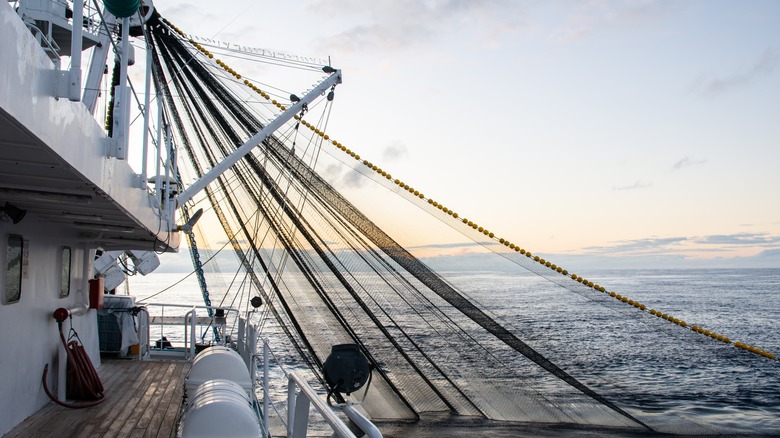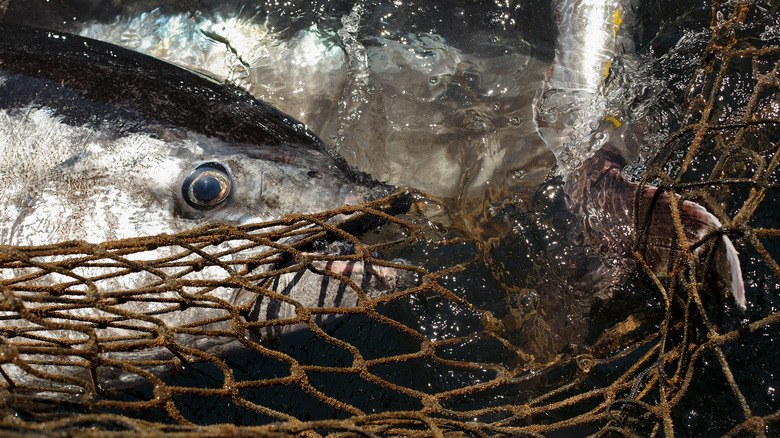The Ancient Italian Tuna Fishing Art Of Mattanza
Tuna fishing has been a part of human tradition and trade for at least 3,000 years, according to Science Direct, and records have shown evidence of it being important to Mediterranean culture and economy since ancient times. Today, modern bluefin tuna — now that bluefin tuna is no longer endangered – is caught by tuna seiners, industrial fishing vessels that use gigantic nets to catch as many tuna as possible in one swoop (via The Oceanographic Institute). These powerful ships travel at speeds up to 30 miles per hour and are equipped with state-of-the-art radar technology to help fishermen catch their quota of tuna in just a few days.
Yet before the advent of technology, large nets, and big ships, ingenious humans cleverly observed nature's rhythms to pinpoint the places where fish would naturally migrate. One of the techniques used in Italy became known as the mattanza — a spectacle that was frequently seen in Sicily.
The ceremony of the mattanza
The Italian tradition of mattanza isn't simply about catching tuna fish; fishing itself began with a ceremony to emphasize the relationship between humans and the sea (per Fine Dining Lovers). Coordination, effort, collaboration, skill, and technique amongst a large group of men were needed to position a large net and catch the fish.
When fish migrated toward warmer waters of the Mediterranean, men of the tuna fishery lined up with large nets to catch the fish (via Visit Andalucia). This act of gathering tuna was not for the faint of heart, however; the water of the sea would turn red as a result of the slaughter.
Unlike tuna seiners, traditional tuna fishing methods were more sustainable. Only tuna were caught in the nets, and any endangered species could be returned to the sea. Though the practice has become impractical, filmmaker Rosselini captured the tradition in his 1950 film Stromboli.

